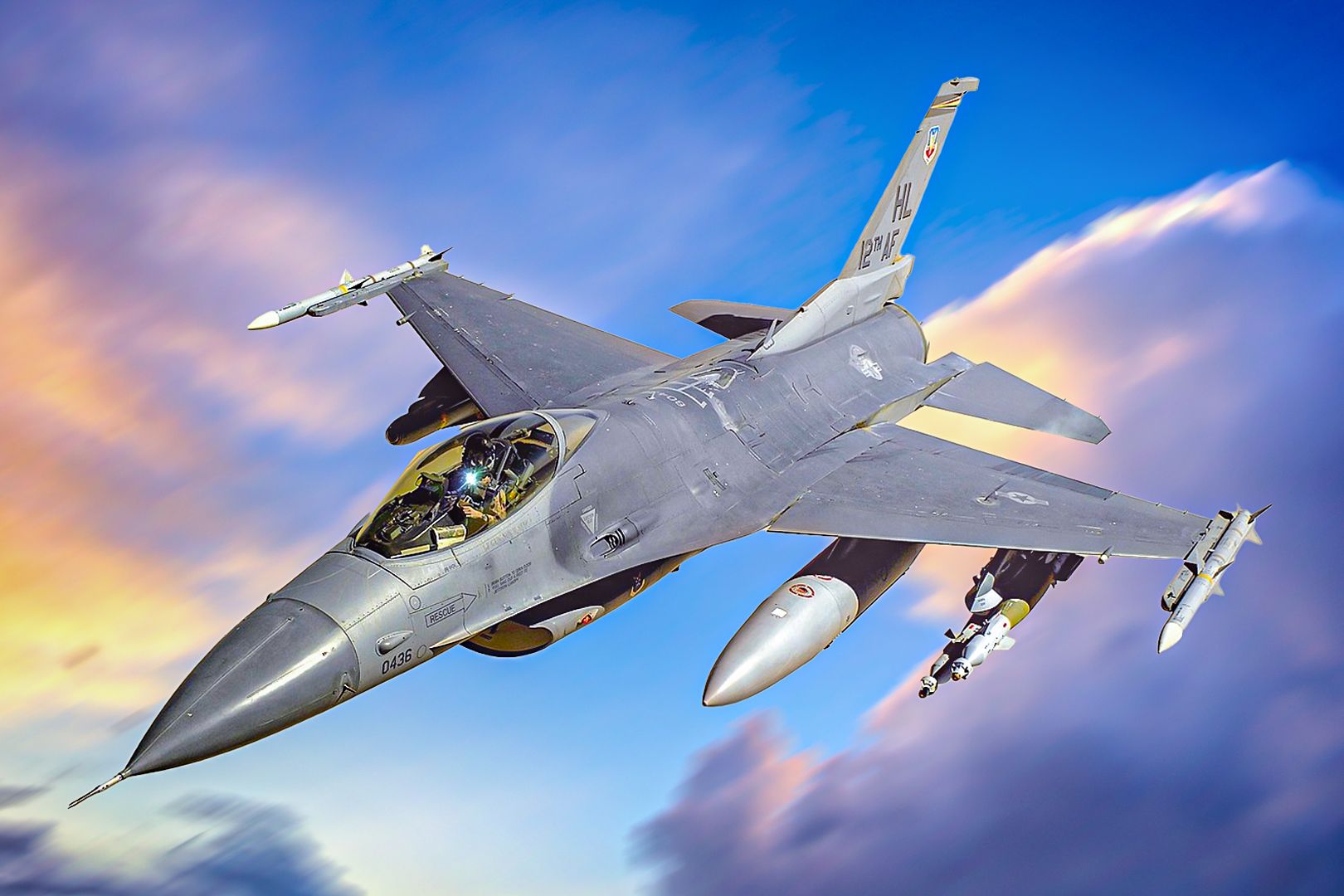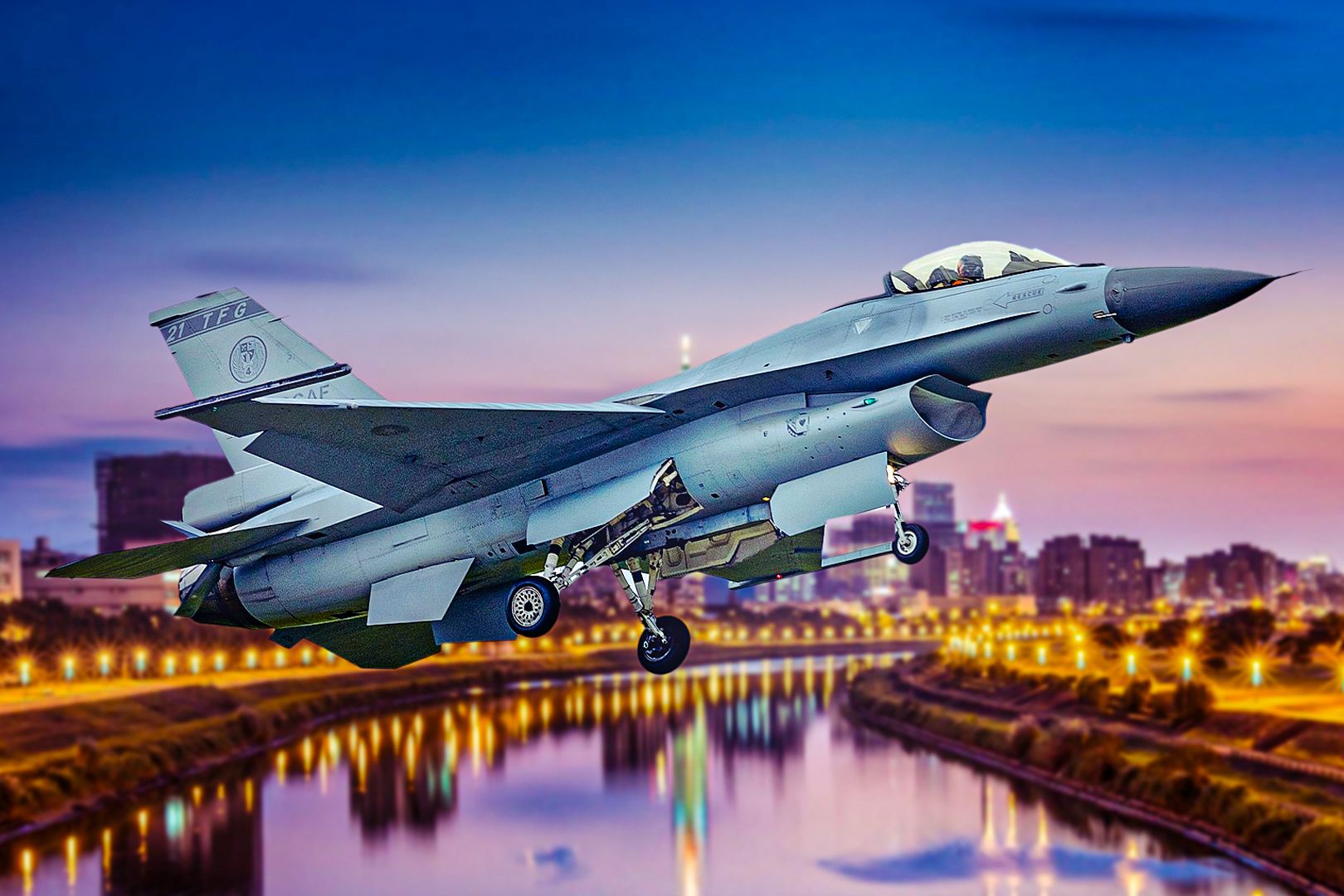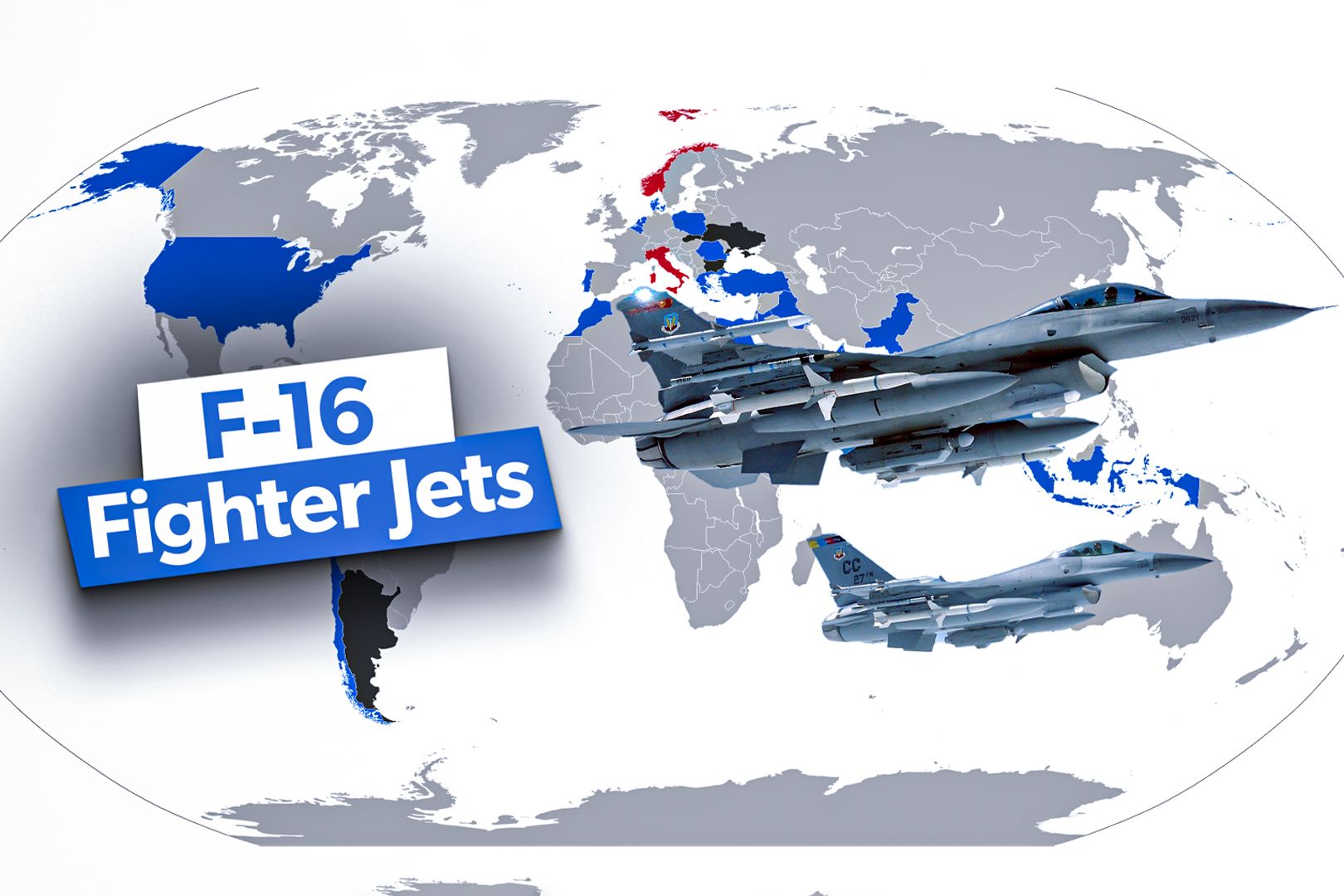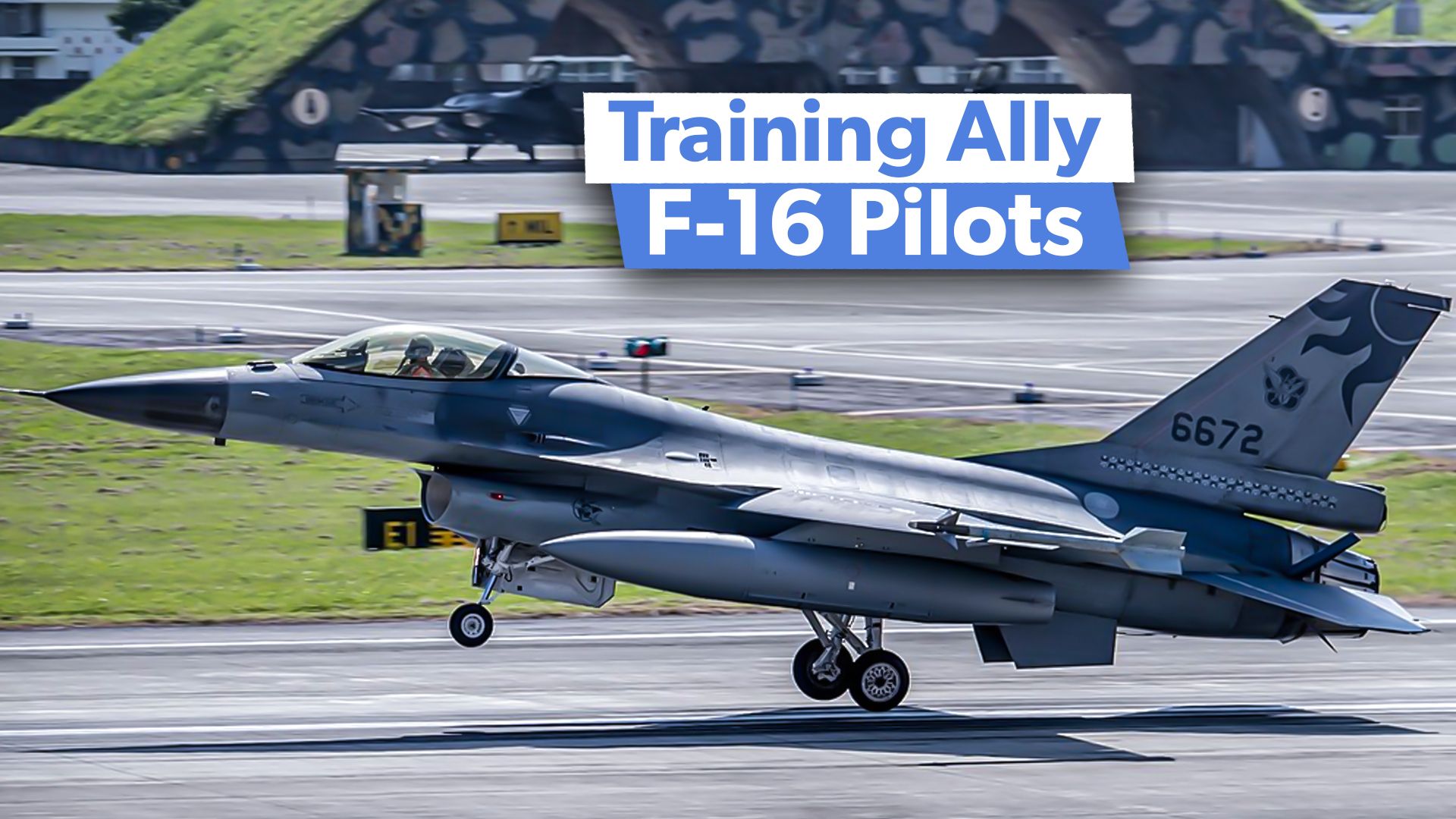When it comes to Foreign Military Sales (FMS) and training of allied pilots for the American-made General Dynamics/Lockheed Martin F-16 Fighting Falcon (AKA the “Viper”) fighting jet, the media focus has been on Ukraine, and understandably so, as Ukraine is using their newly acquired Vipers in their ongoing (and seemingly never-ending) fight against the so-called “special military operation” inflicted by Vladimir Putin’s revanchist Russia.

Related
Zelensky Says Ukraine Used Its F-16s To Shoot Down Russian Missiles During Attack
Ukraine has used its F-16s in combat, defending Ukrainian skies and shooting down Russian missiles and/or drones.
According to the Defense Security Cooperation Agency (DSCA), FMS is authorized by the Arms Export Control Act (AECA), as amended [22 U.S.C. 2751, et. seq.]; the US Secretary of State determines which countries will have programs, and from there, the Secretary of Defense (SECDEF) executes the program.
However, this time, Simple Flying will focus on a different ally’s F-16 program, which may also find itself in a major war in the near future (and which may very well directly involve the United States for good measure). Taiwan faces the ever-growing and ever-daunting prospect of an all-out invasion by mainland Communist China and, accordingly, is sending some of its Republic of China Air Force (ROCAF; 中華民國空軍/Zhōnghuá Mínguó Kōngjūn) officers for F-16 training. So, we ask, how long will it take the US Air Force to train its ROCAF counterparts on the Viper?
Current status of the ROCAF
According to Simple Flying’s Alexander Mitchell in an article we published back in May, the ROCAF currently has a 140-strong Fighting Falcon fleet (alliteration intended), specifically the F-16A/V/B/V variant. The World Database of Modern Military Aircraft’s (WDMMA) 2021 figures are slightly higher than Alexander’s 142 and provide some further breakdown of that aggregate number:
- 115 F-16 A/Vs serving in front-line multirole duties
- 27 F-16Bs serving in fighter trainer duties
- In addition, 66 more F-16Vs are listed as being on order
In addition, the Taiwanese Air Force’s fighter fleet includes the following:
|
Aircraft |
Quantity |
|
Northrop F-5E/F Tiger II (AKA “Freedom Fighter”) |
62; sadly obsolescent; most have been converted to trainer status |
|
Dassault Mirage 2000-5EI/DI |
54; also getting long in the proverbial tooth, but still quite capable |
|
AIDC F-CK-1C/D Ching-kuo |
129; this is Taiwan’s only homegrown (indigenous) fighter plane |
Learn more about the AIDC (Aerospace Industrial Development Corporation/漢翔航空/Hànxiáng Hángkōng Gōngyè Gǔfèn Yǒuxiàn Gōngsī) F-CK-1 Ching-kuo (經國號戰機/Jīngguó Hào Zhànjī).

Related
A Deeper Look At The Operational Capabilities Of The Taiwanese Air Force
The organization operates dozens of fighter jets.
Taiwan’s current F-16 training plan
According to South China Morning Post (SCMP) correspondent Lawrence Chung in an article published last week, the ROCAF is sending 65 of its officers to the US for a year for specialized tactical training on the F-16V:
“The island’s defense ministry revealed the plan in a budget proposal to the legislature last week ahead of the expected delivery of its first US-made F-16V Block 70/72 jets this year…The training aims to expand the pool of instructor pilots for the fourth-generation warplanes, which Taiwan hopes will bolster its combat fleet as the People’s Liberation Army (PLA) intensifies cross-strait activities… The officers will begin their training in January, according to the ministry, which has allocated NT$36.64 million (US$1.2 million) for the activity…Upon completion of training in December, the officers would serve as instructors in the air force, the ministry said.”
The author also noted that Taiwan upgraded its current fleet of F-16A/B Block 20 jets to F-16Vs “to better match the PLA’s fifth-generation J-20 stealth fighters.” Now, realistically speaking, the Chengdu J-20 Wēilóng (威龙;”Mighty Dragon”; NATO reporting name “Fagin”) is a 5th Generation stealth fighter while the F-16V, even with its upgrades, remains a 4th Generation non-stealth fighter, so the J-20 would still have the on-paper advantage. However, to use a gambler’s saying, “You gotta play the hand you’re dealt,” and until the day the US decides to sell the F-35 to Taiwan, the ROCAF will have to make do with what they’ve got.
Mr Chung doesn’t specify which American base will be hosting these Taiwanese fighter jocks. Still, my educated guess would be Morris Air National Guard (ANG) Base in Tuscon, Arizona, which is the home of the 162nd Wing, the U.S. Air Force’s dedicated foreign F-16 training unit.

Related
These Are The World’s Top 5 Air Forces Equipped With F-16 Fighter Jets
The F-16 is one of the most ubiquitous fighter jets in the world, with over 25 operators.
F-16 training time generalities
Stefano D’Urso of The Aviationist notes the following in a January 2024 article:
“Usually, the F-16 Basic Course takes about nine months to graduate pilots that will then go on to operational units for their combat readiness training. According to the US Air Force, during the 37-week long B-Course, students log on average 70 hours of flying time over 59 sorties in addition to roughly 245-hours of academic training and 69-hours of flight simulator training.”
Meanwhile, we go back to the subject of Ukraine’s F-16 pilots, as this example could conceivably provide a yardstick to measure the potential training time for the new batch of ROCAF Viper instructor pilot (IP) trainees. According to Sinéad Baker of Business Insider India:
“Ukrainian pilots were given roughly nine months of training in the US and some European countries, while most Western pilots are given three years to learn the jets, according to The Associated Press…And Ukrainian pilots have risen to that great challenge. An internal US Air Force assessment from last year said that two Ukrainian pilots proved they could complete the training for the F-16 in just four months — more than four times faster than what the Pentagon had predicted.”
What makes that accomplishment all the more remarkable is the fact that the Ukrainian Air Force fighter jocks had no prior experience with Western fighters, as they had been using Russian-made MiG and Sukhoi warbirds left over from the Cold War days when Ukraine was part of the Soviet Union. In other words, they were learning an entirely new weapons system.
By contrast, Taiwan has been allied with the US and has been training on American-made aircraft for practically its entire existence. What’s more, the ROCAF received its first batch of F-16Vs back in 2018, meaning the Vipers are already “like old hat” (so to speak) in the Taiwanese fighter pilot community.
Therefore, if I had to venture an educated guess, these current 65 ROCAF F-16 selectees ought to pass their training qualifications with flying colors (no pun intended) well within the ascribed nine months, and it would surprise me if a good number of them prove their proficiency well before those nine months.

